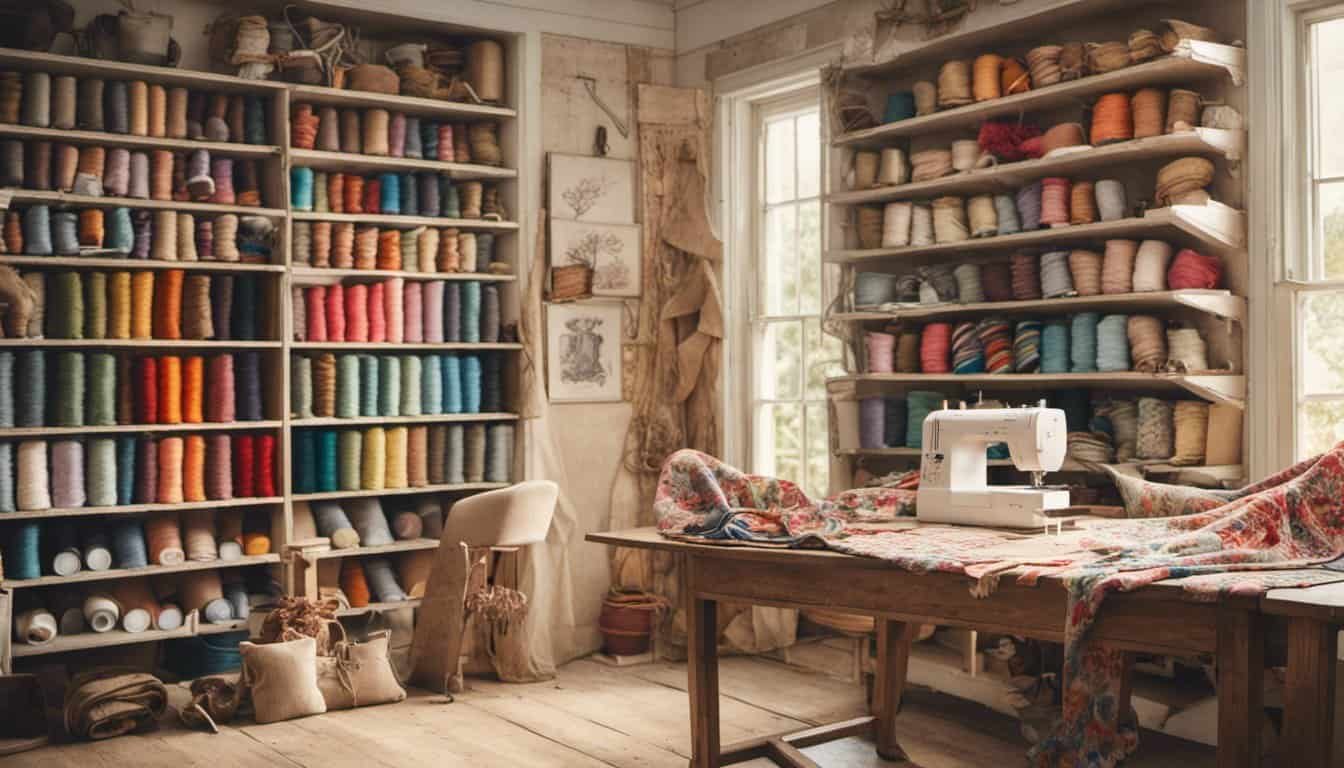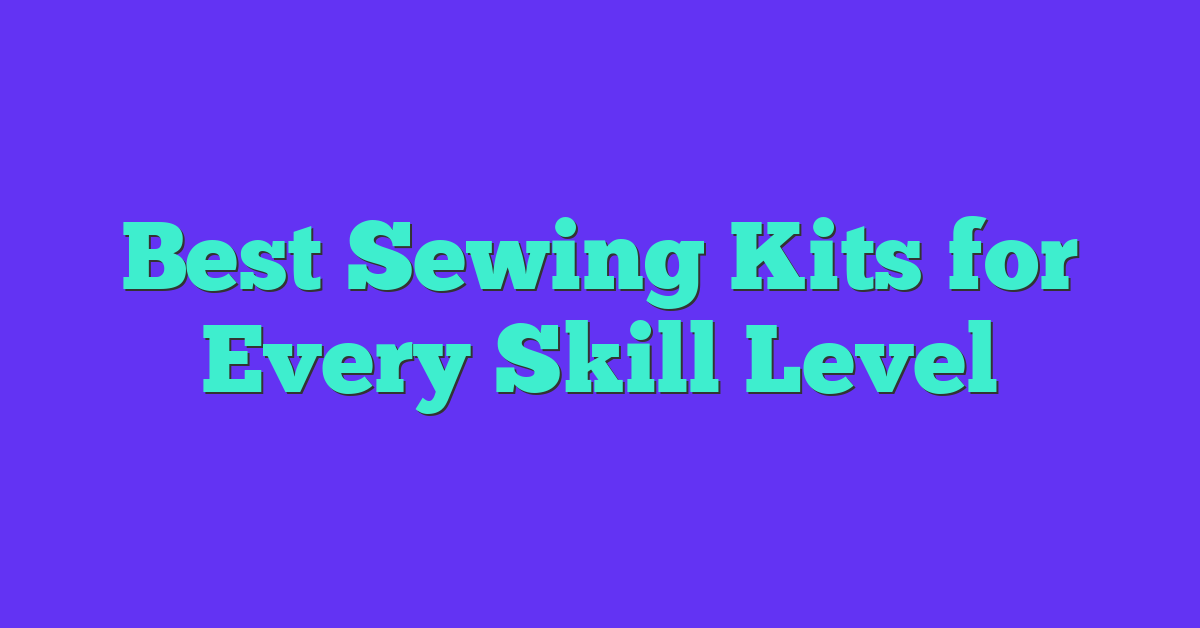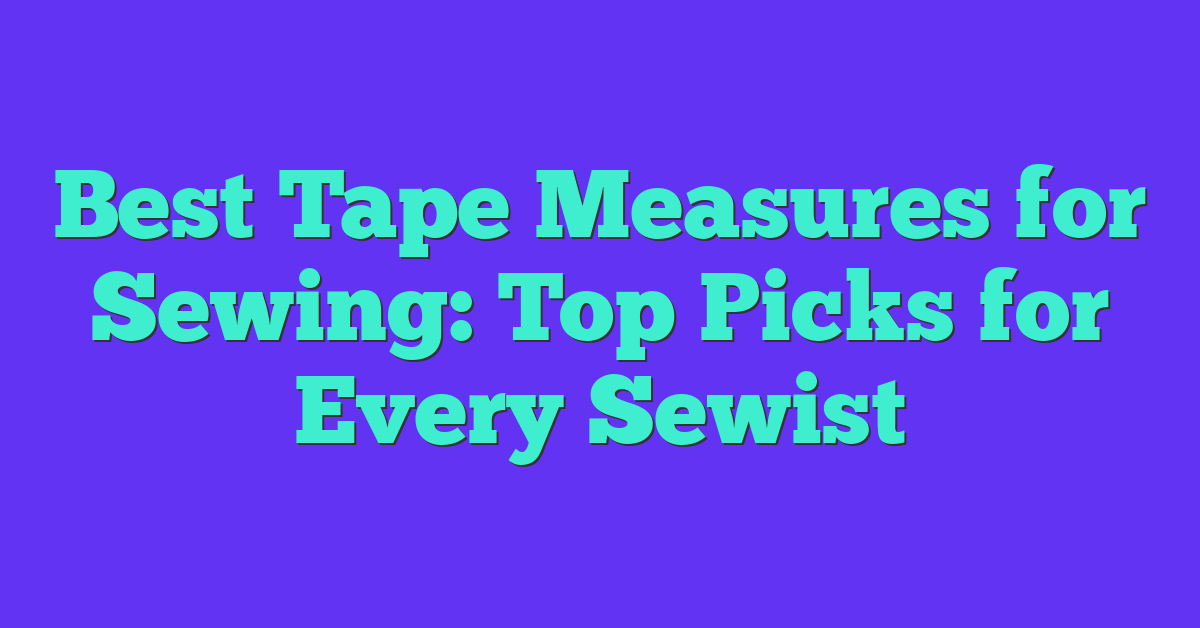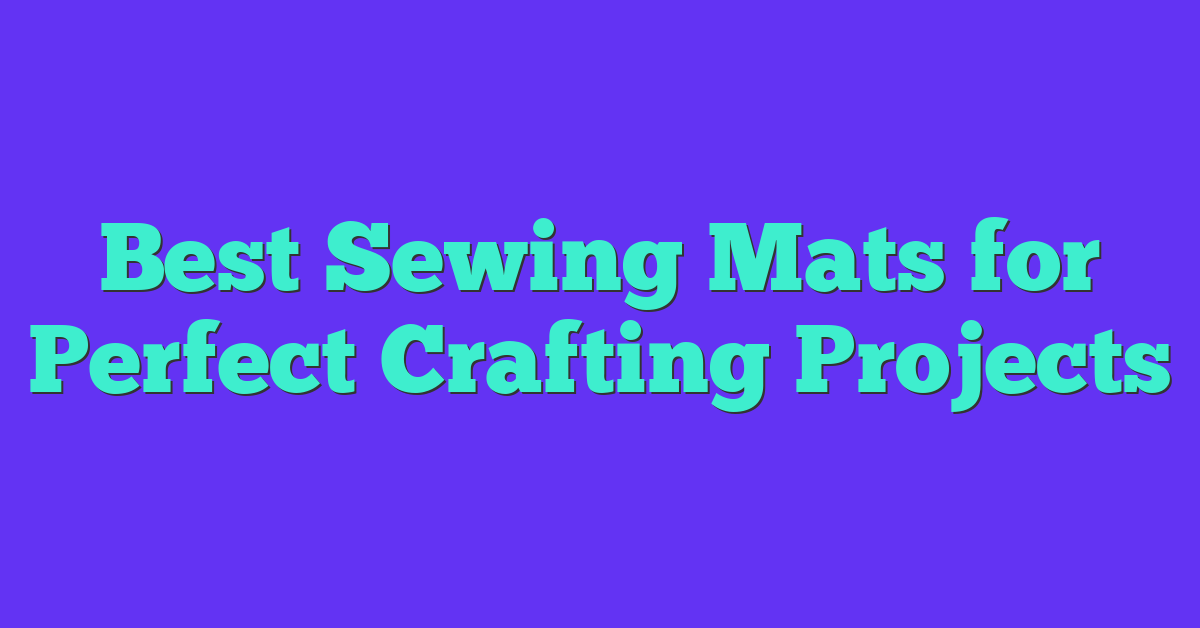Thinking about upgrading your sewing game? A serger might be just what you need to give your projects that professional finish. Whether you’re a seasoned seamstress or just starting out, choosing the right serger can make all the difference.
With so many options on the market, finding the perfect match for your needs can feel overwhelming. From stitch types to ease of use, there are several factors to consider. Let’s explore how to select a serger that fits seamlessly into your sewing routine.
Understanding the Importance of a Serger for Finishing Seams
A serger enhances your sewing projects by providing clean, professional seam finishes. When you finish seams with a serger, edges prevent fraying, ensuring durability. Unlike standard sewing machines, sergers trim excess fabric and apply multiple threads simultaneously, increasing efficiency. You gain consistent stitch quality, essential for garments that withstand regular wear. Additionally, sergers offer various stitch options, allowing you to customize seam finishes based on fabric type and project requirements.
Key Benefits of Using a Serger
- Speed: Complete seam finishing faster than traditional sewing machines.
- Durability: Create strong, flexible seams that last longer.
- Professional Appearance: Achieve a polished look comparable to high-end garments.
- Versatility: Handle different fabric types, including knits and wovens, with ease.
- Efficiency: Trim and finish seams in a single step, reducing manual labor.
Essential Serger Stitches for Seam Finishing
| Stitch Type | Description | Best For |
|---|---|---|
| 3-Thread Overlock | Secures edges with three threads, ideal for lightweight fabrics | T-shirts, blouses |
| 4-Thread Overlock | Adds a rolled hem with four threads, suitable for medium-weight fabrics | Dresses, skirts |
| 5-Thread Overlock | Combines overlocking and flatlocking, perfect for heavy fabrics | Denim, outerwear |
| Rolled Hem | Creates a narrow, rolled edge, ideal for delicate fabrics | Silk scarves, chiffon garments |
When to Use a Serger for Seam Finishing
Integrate a serger into your sewing routine when you require:
- Consistent Finishes: Maintain uniform seam quality across projects.
- Speedy Production: Meet tight deadlines without compromising quality.
- Enhanced Fabric Handling: Work with stretchy or fragile materials without puckering.
- Multiple Seam Techniques: Experiment with different seam types for varied project needs.
Investing in a serger transforms your sewing experience, delivering reliable seam finishes that elevate the quality of your creations.
Key Features to Look For
Selecting the right serger enhances your sewing projects with professional-quality finishes. Focus on essential features to ensure the machine meets your specific needs.
Number of Thread Legs
The number of thread legs determines the serger’s stitching capabilities. Common configurations include:
- 3-Thread: Ideal for lightweight fabrics, providing basic seam finishes.
- 4-Thread: Suitable for medium-weight fabrics, offering stronger seams.
- 5-Thread: Best for heavy fabrics, delivering durable and secure stitching.
| Thread Legs | Best For |
|---|---|
| 3 | Lightweight fabrics |
| 4 | Medium-weight fabrics |
| 5 | Heavy fabrics |
Differential Feed
Differential feed controls fabric stretching and shrinking during sewing. Key benefits include:
- Prevents stretching: Maintains fabric dimensions for accurate seams.
- Reduces puckering: Ensures smooth, flat seam finishes.
- Enhances fabric handling: Accommodates various fabric types, from knits to wovens.
Stitch Options
- Overlock Stitches: Secure seams and prevent fraying.
- Rolled Hems: Create subtle, professional-looking edges on lightweight fabrics.
- Differential Stitches: Adapt to fabric movement, ideal for stretchable materials.
Comparing Top Serger Brands and Models
Choosing the right serger involves evaluating the top brands and their models to find one that fits your sewing needs. Here are some of the leading serger brands and their standout models:
Brother
Brother 1034D
- Thread Legs: 3
- Features: Easy threading system, adjustable differential feed, built-in rolled hem.
- Best For: Beginners and intermediate sewers seeking reliability and ease of use.
Brother 1034X
- Thread Legs: 4
- Features: Enhanced stitch options, faster sewing speed, comprehensive manual.
- Best For: Those needing more versatile stitch types for various fabric weights.
Janome
Janome 8002D
- Thread Legs: 3
- Features: Differential feed control, free arm for versatile sewing, durable metal frame.
- Best For: Advanced sewers looking for precision and durability.
Janome 8003D
- Thread Legs: 4
- Features: Multiple stitch options, easy tension adjustment, automatic thread cutter.
- Best For: Users requiring more stitch variety and automated features.
Singer
Singer 14CG754 ProFinish
- Thread Legs: 3
- Features: Automatic thread tension, color-coded threading path, overlock stitch functions.
- Best For: Beginners needing straightforward operation and reliable performance.
Singer 14CG755
- Thread Legs: 4
- Features: Extended stitch length, superior fabric handling, robust construction.
- Best For: Intermediate sewers wanting increased control and stitch options.
Juki
Juki MO654DE
- Thread Legs: 3
- Features: High-speed sewing, adjustable stitch width and length, double-feed.
- Best For: Heavy-duty projects and experienced sewers seeking high performance.
Juki MO754DE
- Thread Legs: 4
- Features: Advanced differential feed, multiple stitch settings, electronic controls.
- Best For: Professional sewers requiring precise adjustments and a variety of stitch types.
Bernina
Bernina L 460
- Thread Legs: 5
- Features: Full-color LCD display, extensive stitch library, advanced feeding system.
- Best For: Professional sewers and quilting enthusiasts needing extensive features and high precision.
Bernina L 460 Q
- Thread Legs: 3
- Features: Versatile stitch options, easy maintenance, high-quality build.
- Best For: Users seeking a balance between functionality and ease of use with premium quality.
Comparison Table
| Brand | Model | Thread Legs | Key Features | Best For |
|---|---|---|---|---|
| Brother | 1034D | 3 | Easy threading, adjustable differential feed | Beginners and intermediate sewers |
| Brother | 1034X | 4 | Enhanced stitch options, faster speed | Versatile stitch types for various fabrics |
| Janome | 8002D | 3 | Differential feed, free arm, metal frame | Advanced sewers seeking precision |
| Janome | 8003D | 4 | Multiple stitches, automatic thread cutter | Users needing stitch variety and automation |
| Singer | 14CG754 | 3 | Automatic tension, color-coded threading | Beginners needing straightforward operation |
| Singer | 14CG755 | 4 | Extended stitch length, robust construction | Intermediate sewers for increased control |
| Juki | MO654DE | 3 | High-speed, adjustable stitch, double-feed | Heavy-duty projects and high performance |
| Juki | MO754DE | 4 | Advanced feed, multiple settings, electronic controls | Professional sewers needing precision |
| Bernina | L 460 | 5 | Full-color LCD, extensive stitches, advanced feed | Professionals and quilting enthusiasts |
| Bernina | L 460 Q | 3 | Versatile stitches, easy maintenance | Premium quality with balanced functionality |
Evaluating these brands and models based on thread legs, key features, and intended use helps you select a serger that aligns with your sewing projects and skill level.
Setting Your Budget and Getting the Best Value
Determining your budget is crucial when selecting a serger that meets your sewing needs without overspending.
Establish Your Budget Range
Identify a comfortable spending limit based on your sewing frequency and project complexity.
- Beginner Sergers: $150–$300
- Intermediate Models: $300–$600
- High-End Sergers: $600 and above
Evaluate Features Against Cost
Prioritize essential features that align with your sewing goals to maximize value.
- Number of Thread Legs: 3-thread for basic finishes, 4-thread for versatility, 5-thread for heavy fabrics
- Differential Feed: Prevents fabric puckering and stretching
- Automatic Tension Control: Ensures consistent stitch quality
- Included Accessories: Additional presser feet, spool holders, and extension tables
Consider Long-Term Value
Invest in a serger that offers durability and repair support to ensure longevity.

- Build Quality: Metal components last longer than plastic counterparts
- Warranty: Look for at least a 1-year warranty covering parts and labor
- Customer Support: Accessible and responsive manufacturer support
Assess Warranties and Support
A robust warranty and reliable customer service enhance the overall value of your serger purchase.
| Brand | Warranty Period | Customer Support Rating |
|---|---|---|
| Brother | 2 years | 4.5/5 |
| Janome | 1 year | 4.0/5 |
| Singer | 1 year | 3.8/5 |
| Juki | 3 years | 4.7/5 |
| Bernina | 2 years | 4.6/5 |
Prioritize Optional Features
Select additional features that enhance your sewing experience without inflating the cost.
- LED Lighting: Improves visibility on intricate projects
- Color-Coded Threads: Simplifies threading process
- Speed Control: Adjust sewing speed for precision or efficiency
By carefully setting your budget and evaluating each serger’s features and long-term value, you ensure a smart investment that enhances your sewing projects.
Tips for Testing and Choosing the Right Serger
Assess Your Sewing Needs
Determine the types of projects you undertake. Lightweight fabrics like chiffon require a 3-thread serger, while medium to heavy fabrics benefit from 4 or 5-thread options. Consider the variety of fabrics you use to ensure versatility.
Evaluate Key Features
- Thread Legs: Choose based on fabric weight.
- Differential Feed: Controls fabric stretching and puckering.
- Automatic Tension Control: Ensures consistent stitch quality.
- Speed Control: Adjust sewing speed for precision.
- LED Lighting: Enhances visibility on your workspace.
Test Performance
Operate the serger on different fabric types. Check stitch quality, fabric handling, and ease of threading. Ensure smooth transitions between stitches without fabric bunching or slipping.
Compare Brand Reliability
« You Won’t Believe the Benefits of Sewing with Organic Cotton: Must-Know Tips
Turn Leftover Fabrics into Fashion: How to Make a Patchwork Bag from Scraps »
Review customer support and warranty options. Select brands with strong reputations for durability and service. Refer to the comparison table below for warranty periods and support ratings.
| Brand | Warranty Period | Customer Support Rating |
|---|---|---|
| Brother | 2 years | 4.5/5 |
| Janome | 3 years | 4.7/5 |
| Singer | 1 year | 4.2/5 |
| Juki | 2 years | 4.6/5 |
| Bernina | 3 years | 4.8/5 |
Set a Budget
Categorize sergers into beginner ($150–$300), intermediate ($300–$600), and high-end ($600+). Balance essential features against cost. Prioritize long-term value with durable build quality and comprehensive warranties.
Read Reviews and Testimonials
Analyze feedback from other users. Focus on reliability, ease of use, and performance. Verified reviews offer insights into real-world application and potential issues.
Prioritize Ease of Use
Select a serger with intuitive controls and clear instructions. Features like color-coded threads and automatic threading simplify setup and operation, especially for beginners.
Consider Optional Features
Enhance your sewing experience with features like:
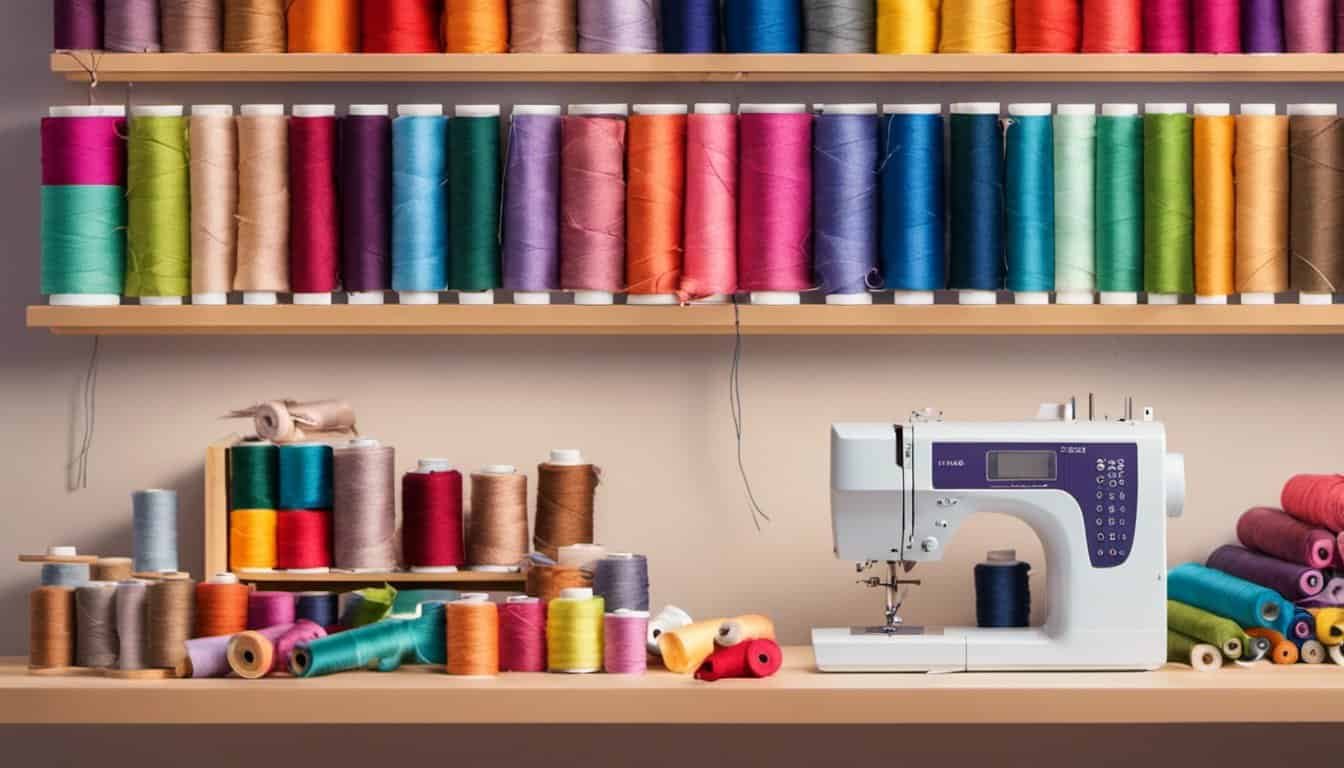
- Color-Coded Threads: Simplify threading process.
- Fold-Down Tables: Provide additional workspace.
- Extension Tables: Accommodate larger projects.
- Built-In Stitches: Expand creative possibilities.
Ensure Compatibility
Check if the serger is compatible with your existing sewing machine. Features like shared accessories and consistent threading mechanisms facilitate seamless integration into your sewing routine.
Take a Workshop or Demo
Attend a serger workshop or demo session. Hands-on experience helps evaluate functionality and comfort. Interact with experts to address specific questions and concerns.
By following these tips, you can effectively test and choose a serger that aligns with your sewing needs, ensuring professional finishes and enhancing your overall crafting experience.
Conclusion
Finding the perfect serger can make your sewing projects shine. With the right choice, you’ll enjoy smooth and durable finishes every time. Take your time to consider what features matter most to you and how they fit your budget. Don’t rush the decision—you deserve a serger that complements your style and workflow. Testing different models can give you confidence in your choice. Investing in a quality serger not only enhances your creations but also makes sewing more fun and efficient. Here’s to taking your sewing to the next level!
